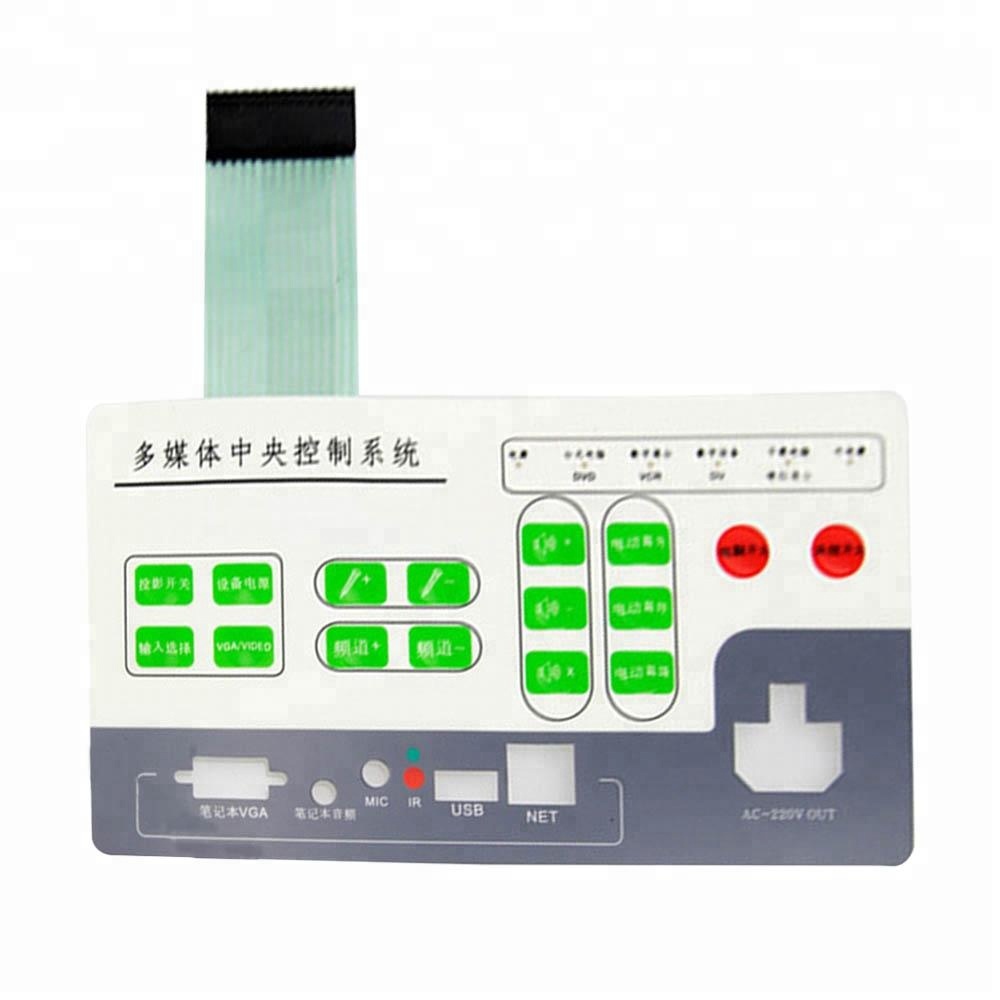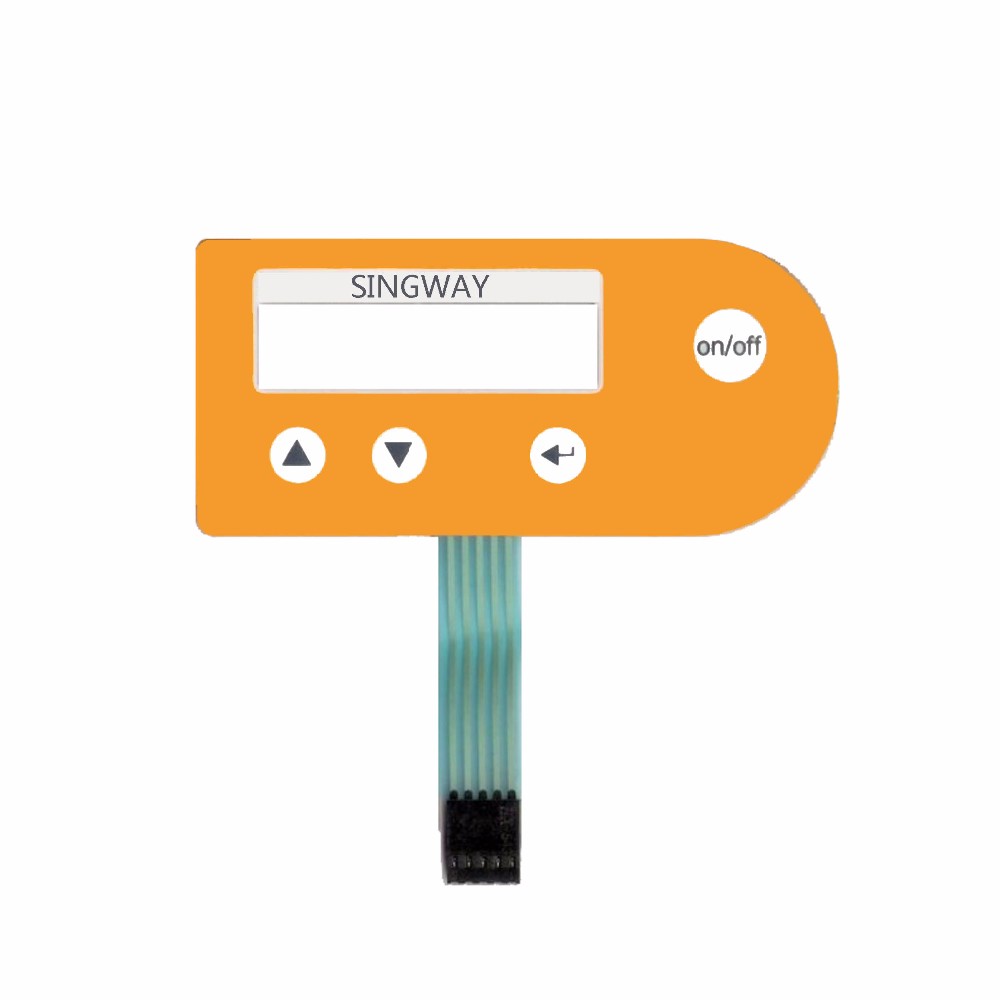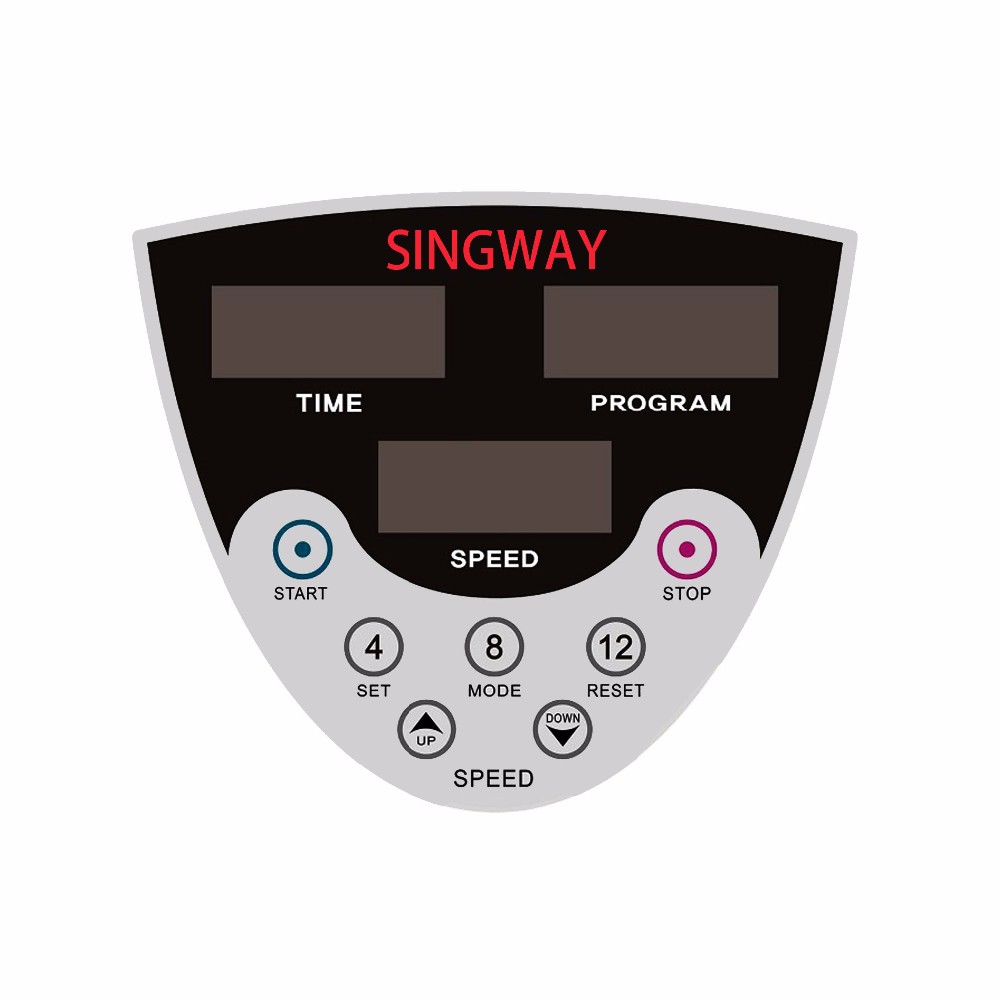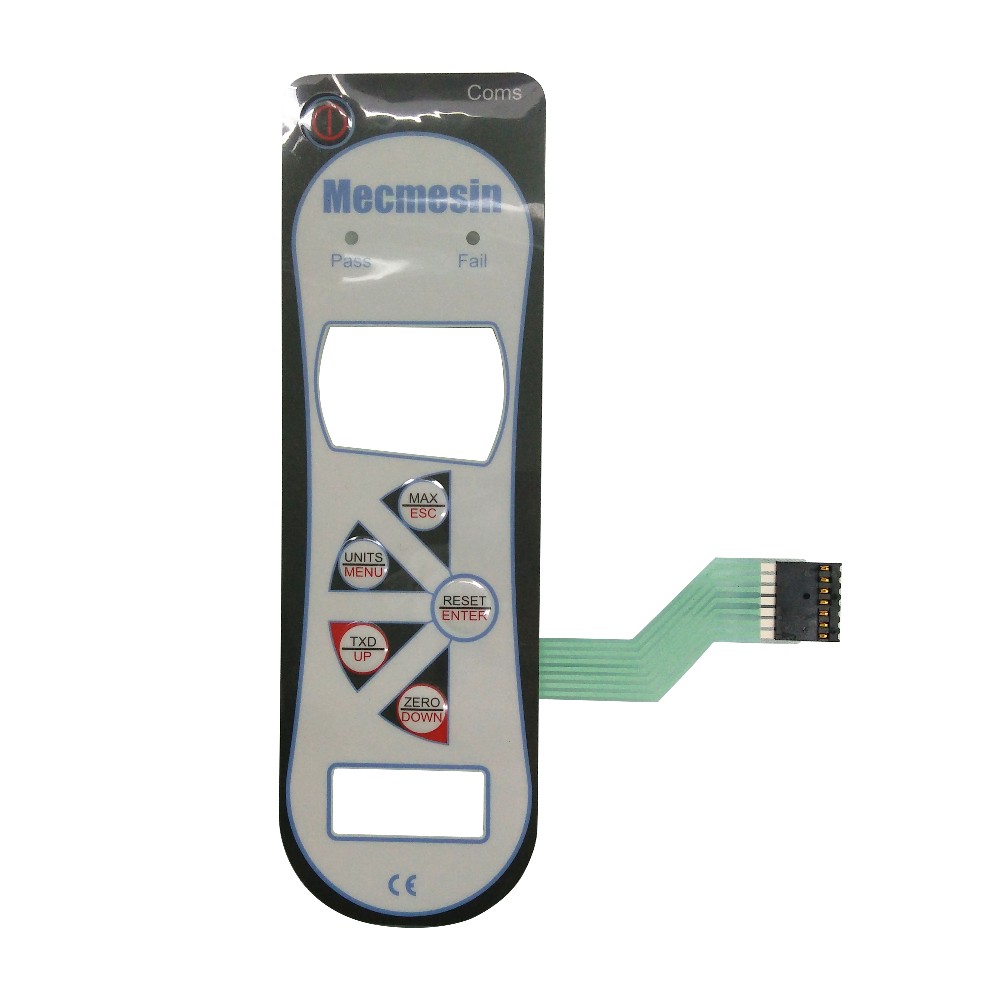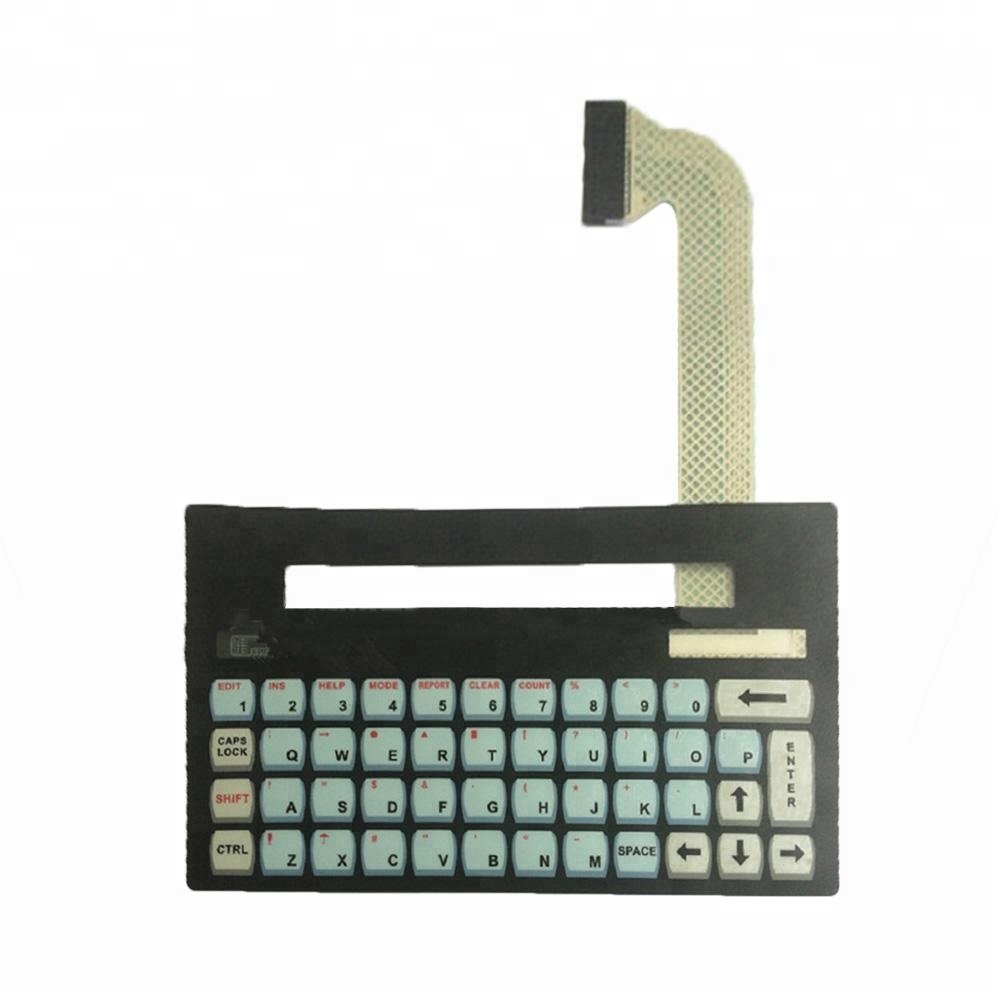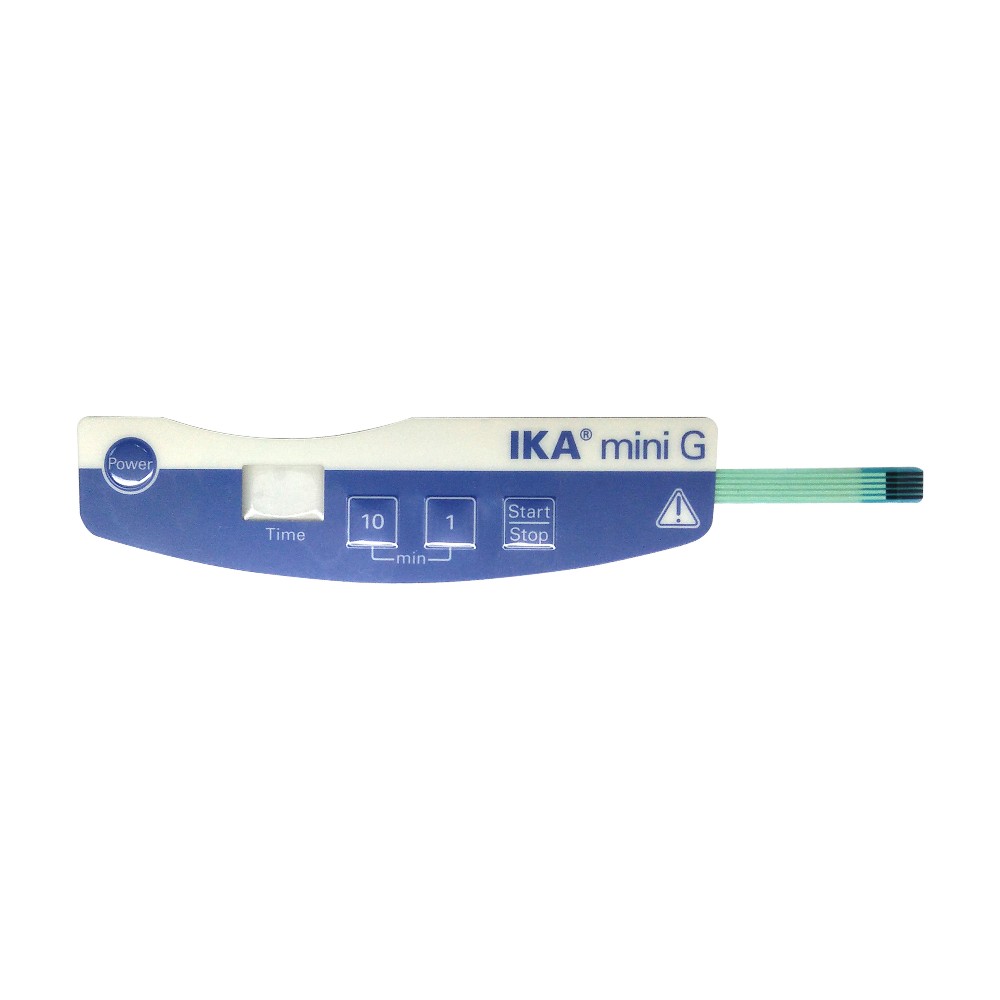Advantages and Applications of Membrane Switches
Advantages and Applications of Membrane Switches
Electronic
● Circuit Rating: 35V(DC),100mA,1W
● Resistance: 10Ω-500Ω
● Insulation Resistance: 100MΩ100V
● Dielectric Strength: 250VRms (50-60Hz 1min)
● Contact Bounce: ≤5ms
● Life Expectancy: Flat: ≥5 Million Times,Tactile: ≥1 Million Times
Mechanical
● Operation Pressure: Flat 57-284g (2-10oz), Tactile 170-397g (6-14oz)
● Switch Stroke: Flat 0.1-0.5mm, Tactile 0.6-1.5mm
Environment
● Operation Temperature:-40℃-+80℃
● Storage Temperature:-40℃-+80℃
Product description
Product parameters
Thin film switch is a widely used switching technology in electronic products, favored for its unique design and functionality. The following is a detailed introduction to the main advantages and application areas of membrane switches.
advantage
Simple structure: Thin film switches are usually composed of multiple layers of thin films stacked together, with a simple design and easy production.
Small size and light weight: Compared to traditional mechanical switches, membrane switches take up less space and are suitable for portable devices and compact designs.
Waterproof and dustproof: The enclosed design of the membrane switch gives it good waterproof and dustproof characteristics, making it suitable for harsh environments.
Long operating life: not easily worn, the designed membrane switch can withstand hundreds of thousands of presses and has a long service life.
Good tactile sensation: The tactile design of the membrane switch can provide a good user experience, and some designs also have tactile feedback.
Customizable: The film can be customized and printed according to the needs, with diverse pattern colors and aesthetic appearance of the product.
Integrated function: Multiple functions can be integrated on the same panel, such as LED indicator lights, audio, etc., to increase the functionality of the product.
Benefit: The production process is relatively simplified and the material cost is low, making thin switches have good cost-effectiveness in mass production.
application
Home appliances: Control microwave ovens, rice cookers, air conditioners, and other household appliances.
Industrial equipment: widely used in various industrial control panels, instruments, and other equipment.
Consumer electronics, such as phones, calculators, speakers, game consoles, etc., use membrane switches for their user interfaces.
Medical equipment: used for various medical devices and equipment, such as monitors, blood glucose meters, etc., due to its durability and ease of cleaning.
Thin film switches are commonly used in navigation systems and air control panels in automotive electronics.
Security: Used for access control systems and alarms, the operating interface of these devices often uses membrane switches.
Portable devices: widely used in mobile phones, tablets, and portable speakers.
In summary, membrane switches have become an important control interface choice in modern electronic products due to their diverse advantages and wide application fields.


